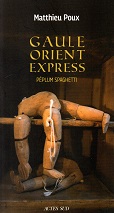Je suis en train de grouper des ÃĐlÃĐments pour ÃĐlaborer une page sur le RhÃĐged, Urien, Taliesin, et Cie.
page en cours de publication.
http://marikavel.org/arthur/rheged/rheged-accueil.htm
Les limites de ce "royaumes" varient selon les auteurs. Toute observation sera la bienvenue.
Une traduction française des textes de Taliesin serait la bienvenue. J'en citerai la provenance et/ou l'auteur.
JCE




